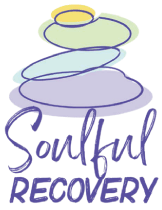What Are The Symptoms of Marijuana Use Disorder?
Marijuana, also known as cannabis or weed, is one of the most commonly used illicit drugs globally. While many people believe it to be harmless, it is important to recognize that marijuana addiction is a real and serious issue. Understanding the symptoms, recognizing the prevalence of marijuana addiction in different age groups, and knowing the available treatment options are crucial in addressing this growing concern. In this article, we will explore the symptoms of marijuana addiction, statistics on marijuana addiction in adolescents and adults, and discuss how to treat marijuana addiction effectively.
Symptoms of Marijuana Addiction:
1. Increased tolerance: Over time, individuals may need larger amounts of marijuana to achieve the desired effects, indicating the development of tolerance.
2. Withdrawal symptoms: When attempting to stop or reduce marijuana use, individuals may experience withdrawal symptoms such as irritability, insomnia, anxiety, loss of appetite, and restlessness.
3. Neglected responsibilities: An individual addicted to marijuana may start neglecting their personal and professional responsibilities. This could include poor academic or work performance, declining social relationships, and neglecting personal hygiene.
4. Failed attempts to quit: Despite wanting to quit or cut back on marijuana use, individuals find it challenging to do so. They may have made multiple unsuccessful attempts to stop or control their use.
5. Loss of interest in activities: Marijuana addiction can lead to a loss of interest in activities that were previously enjoyable. Individuals may lose motivation, experience decreased energy levels, and show signs of apathy.
Statistics on Marijuana Addiction In Adolescents and Adults
The prevalence of Marijuana addiction in the United States cannot be understated. One large reason for this is increased legalization comes greater accessibility. Additionally, there’s been a trend of increased potency among marijuana products. What used to be low potency weed of 15%-40% is now upwards of 90% THC. This means the effects are stronger, which can lead to greater dopamine release, resulting in greater addiction potential.
According to the National Institute on Drug Abuse (NIDA), marijuana use among adolescents is a significant concern. In 2020, about 9.7% of 8th graders, 19.3% of 10th graders, and 22.0% of 12th graders reported marijuana use within the past month in the United States.
Moreover, Marijuana use among adults has also increased in recent years. According to the Substance Abuse and Mental Health Services Administration (SAMHSA), in 2019, approximately 43.5 million adults aged 18 and older in the United States reported using marijuana in the past year.
Given the information described in the above section, there poses a real risk for increased marijuana dependency.
How To Treat Marijuana Addiction
If you or your loved one is experiencing symptoms associated with Marijuana addiction, there are several options to help treat this affliction.
1. Behavioral therapies: Cognitive-behavioral therapy (CBT) and motivational enhancement therapy (MET) are commonly used approaches to treat marijuana addiction. These therapies help individuals understand their patterns of use, develop coping strategies, and address underlying issues that contribute to their addiction.
2. Support groups: Joining support groups, such as Marijuana Anonymous (MA), can provide individuals with a sense of community, understanding, and support from others who have experienced similar challenges. These groups offer a platform to share experiences, learn from others, and receive encouragement in maintaining sobriety.
3. Individual counseling: Seeking individual counseling with a therapist or addiction specialist can be beneficial in exploring personal triggers, underlying psychological factors, and developing personalized strategies for recovery.
4. Treatment programs: In severe cases of marijuana addiction, residential or outpatient treatment programs may be necessary. These programs provide a structured environment, intensive therapy, and support to help individuals overcome addiction and develop the skills needed for long-term recovery.
5. Lifestyle changes: Making positive lifestyle changes can significantly aid in overcoming marijuana addiction. This includes adopting healthy habits such as regular exercise, a balanced diet, improving sleep patterns, and engaging in activities that promote physical and mental well-being.
6. Relapse prevention: Developing relapse prevention strategies is crucial in maintaining long-term sobriety. This involves identifying high-risk situations, creating a plan to navigate through triggers, and building a strong support network to provide ongoing guidance and accountability.
It is important to remember that treatment approaches may vary based on individual needs, and it is recommended to seek professional help to determine the most appropriate treatment plan.
Concluding Thoughts
In conclusion, recognizing the symptoms of marijuana addiction, understanding the prevalence of addiction in different age groups, and knowing the available treatment options are essential in addressing this issue effectively. By being aware of the signs of addiction, understanding the statistics, and utilizing appropriate treatment methods, individuals can take the necessary steps towards recovery and a healthier, substance-free life.

